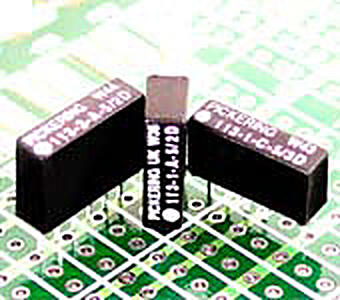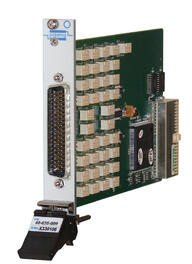
Signal switching in test is a very important part of a test system design. Whether it is sharing test resources across multiple test points, reconfiguring system resources or controlling input signals; a properly selected and implemented switching system assures accurate and fast testing.
For the most part, switching systems use mechanical relays, either Reed Relays or EMRs (Electro Mechanical Relays). The relays used in these switching systems could fail for a variety of reasons. In some cases it may be a worn out mechanism, however the most frequent problems are simply down to relay abuse caused by programming errors, hot switching or UUT faults that cause the switching system to operate outside its normal conditions.
If relay failures are being experienced, it may help to note the pattern of failure and the circumstances under which they occur - this may give valuable clues in how to fix the problem.
Below you will find some topics from our knowledgebase wiki to help you understand relays and why they fail. The goal here is to make you aware in order to minimize the potential failure mechanisms:
What Causes Relays to Fail?
Relays can fail for a number of reasons; here are links to information on common failure mechanisms for common types of relays:
- Hot Switching Relays - What is hot and cold switching and what impact does it have on relay life?
- Relay Ratings - Exceeding a relay rating can severely shorten the relay life. Here you will find a handy guide to the common terms used in describing a relay and the switching systems they are used to create.
- Protecting Fault Insertion Relays with Digital I/O - In some cases, digital I/O cards can be used to reduce the incidence of welds, especially when caused by faulty test targets.
Finding Relay Failures
Relays can fail for a variety of reasons as seen in the cases above. Some are accidents, some are caused by manufacturing defects and others are caused by simply because mechanical relays have reached their end of life.
Continue here to learn more about Finding Relay Failures >>
Relay End of Life
Switching data sheets quote the number of operations that a relay can perform, however, the definition of end of life for a relay is not a precise term and is open to different interpretations.
Continue here to explore of the issue related to Relay End of Life >>
Minimum Relay Capacity
EMR relays often have a minimum switch capacity; in this article we will explain the cause and effect on users.
Continue here for an explanation >>
 You can find addition articles on our knowledgebase related to switching and relay reliability, here are a few:
You can find addition articles on our knowledgebase related to switching and relay reliability, here are a few:
Have questions on switching and relay reliability? Contact one of our switching experts by clicking below.



 You can find addition articles on our
You can find addition articles on our 